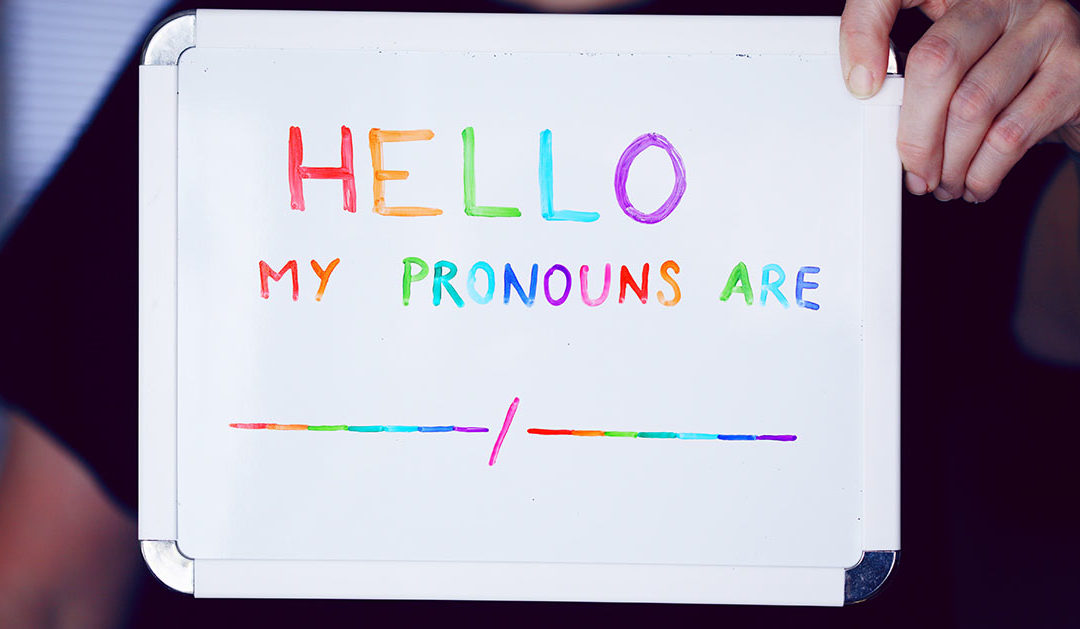Gender pronouns are becoming increasingly more common to share with others. From email signatures to Zoom participant names and LinkedIn profiles. She/her/hers. He/him/his. They/them/theirs. But what exactly are these?
A personal pronoun is a grammatical term that may take you back to middle school English. It is simply a word used in place of a person’s name. When used in this way, the pronoun typically assigns a gender or sex to the individual being referenced. The most common examples of personal pronouns – and the ones you probably learned in school – are: he, him, his, she, her, and hers. However, there are many more recognized pronouns used today, such as they, them, and theirs, ze, zir, ve, and vers.
Although it may not sound grammatically correct, the use of “they,” “them,” and “theirs” when referring to a singular person was used as early as 1881 as noted by Emily Dickinson. Some research even suggests the singular use even in the late 14th century! And in 2019, Merriam-Webster announced the pronoun “they” as the word of the year.
These newer gender pronouns have evolved as our understanding of gender and sex too have evolved. Not every person identifies as a completely binary individual, meaning male or female. Assigning gender to a person through use of pronouns without first asking can be problematic and even hurtful when the pronouns chosen do not represent the person being referenced or spoken to. For example, a person born biologically female may identify has a male – or what would be called a transgender male – but still uses their legal female-sounding name and has a typical female body shape. This individual may choose the gender pronouns he/him/his or they/them/theirs instead of she/her/hers.
However, pronouns are typically chosen based on outside appearance and/or a person’s name. Pronoun assumptions based on this are often incorrect and the message this carries is that a person must look or act a certain way in order to be associated with a specific pronoun. Using the example above, a waitress may assume the individual would like to be called “her” but would, in fact, be causing undo stress to that individual by doing so.
It is almost always a good idea to offer your pronouns to a person and ask other people what their pronouns are when meeting someone new. Using a person’s preferred gender pronouns shows acceptance and respect. But do also remember that a person may not feel comfortable sharing their pronouns, and that’s OK, too!
If you make a mistake with a person’s preferred pronouns that person may correct you or they may not. If you happen to notice your mistake, it is often best to offer a simple acknowledgment of your mistake, offer a genuine and brief apology, and move on in the conversation. Most people do not want to draw attention to the usage or assumption of an incorrect pronoun beyond a brief reminder.
It’s also worth mentioning that a person’s pronouns can change depending on the environment they are in and who else may be near. If you’re not sure, the best thing to do is JUST ASK!
And if you or a loved one are experiencing stress due to gender identity, Your Story Matters Therapy Group is here to answer questions or to provide professional services. We are still offering telehealth sessions in addition to in-person therapy at both of our Omaha locations and our Council Bluffs office. Contact us today.


Recent Comments